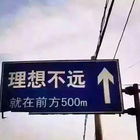
S 2021.01.18
介绍: This is Scientific American's 60-second Science, I'm Susanne Bard.
Near the end of the 18th century, the industrial revolution began to transform Great Britain. Machines replaced hand tools, factories sprouted up in cities and towns, and a sharp uptick in coal combustion polluted the skies. The industrial rev...
介绍: This is Scientific American's 60-second Science, I'm Susanne Bard.
Near the end of the 18th century, the industrial revolution began to transform Great Britain. Machines replaced hand tools, factories sprouted up in cities and towns, and a sharp uptick in coal combustion polluted the skies. The industrial revolution, and the pollution that followed in its wake, soon spread to the rest of Europe. But some of the smoke and ash didn't stay there. It also drifted into the upper atmosphere and was blown by winter winds all the way to the frigid Himalayas.
"This ash was transported for thousands of kilometers. And eventually, it was deposited with the snowflakes."
Environmental scientist Paolo Gabrielli of the Ohio State University. His team found signatures of airborne pollution from the beginning of the industrial revolution in Tibet—specifically, in ice cores taken from a glacier nearly 24,000 feet above sea level on Mount Shisha Pangma.
这里是科学美国人——60秒科学系列,我是苏珊娜·巴德。
18世纪末,工业革命开始改变英国。机器取代了手工工具,工厂在城镇里涌现,煤炭燃烧量急剧增加导致了空气污染。工业革命和随之而来的污染很快蔓延到欧洲其他地区。但有些烟雾和灰尘并没有停留在欧洲。它们还飘到了上层大气,之后被冬季的风一路吹到寒冷的喜马拉雅山。
“这些灰尘被运送了数千公里。最后和雪花一起沉积。”
俄亥俄州立大学的环境科学家保罗·加布里埃尔说到。他的团队在西藏发现了工业革命初期的空气污染特征,具体来说,他们在希夏邦马峰上一个海拔近2.4万英尺冰川采集的冰芯中发现了污染。

